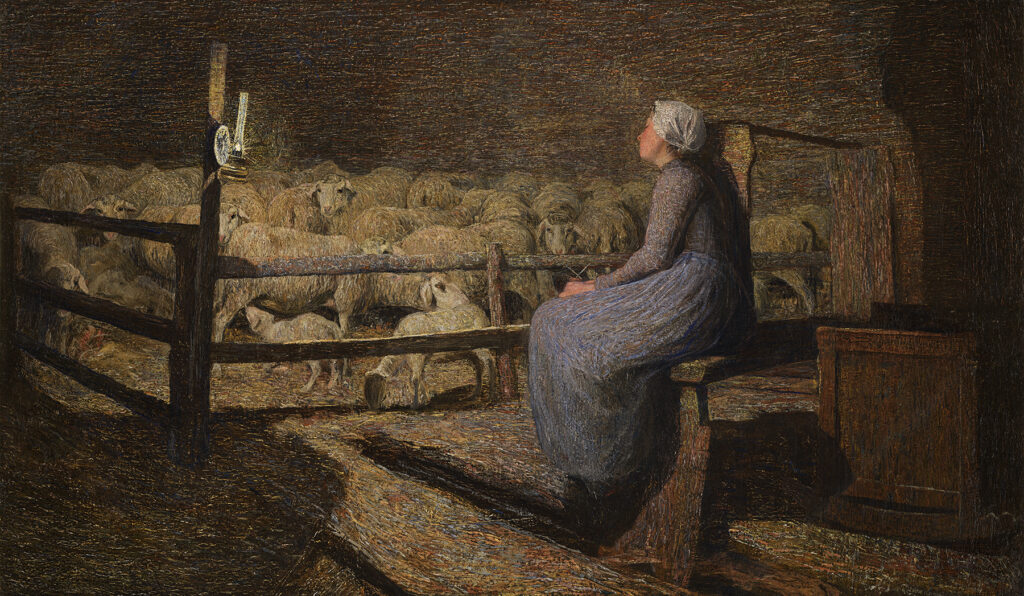Exhibitions
Cabinet exhibition:
Segantini. All’ovile — Genesis of a Masterpiece
(20 May 2022 — 20 April 2023)

Curated by Annie-Paule Quinsac, expert on Segantini’s art and Italian Divisionism, and Mirella Carbone, artistic director of the Segantini Museum, and with the collaboration of the Gallerie Maspes in Milan, this cabinet exhibition is dedicated to the painting All’ovile, a masterpiece from 1892.
The painting is part of a series of three works depicting the effect of lantern light in a closed, dark room. The three paintings continue, in a modern, experimental language, the tradition of the 17th-century luminists with whom Segantini was familiar. The first work, the most monumental, Le due madri. Studio di lanterna (1889), is in the Civica Galleria d’Arte Moderna in Milan; the second, All’arcolaio (1891), is in the National Gallery in Adelaide, Australia. All three works are of the highest quality, but the magical effect of the light, which gives transcendence to the scene, is particularly noticeable in All’ovile, precisely because of the more intimate nature of this painting. As for the Divisionist technique, here Segantini goes beyond the suggestive rendering of light through juxtaposed strokes in pure colours. The use of gold in the form of powders and particles incorporated into the fresh impasto of colour allows the artist to accentuate the vibrations of light with a suggestive shimmer. As always, his ability to suggest the physicality of things is impressive: from the fleece of the sheep to the fabric of the woman’s dress and her face, to the wood of the cot, which is different from that of the cradle, everything comes alive.
In the exhibition, the painting is flanked by a series of photographs derived both from chemical analyses of micro-colour samples and from non-invasive photographic and spectrographic studies carried out by scientists Davide Bussolari and Stefano Volpin. These enlargements allow the visitor to better understand the artist’s slow creative process and to discover the unexpected, i.e. the existence of an earlier painting that Segantini later painted over with All’ovile.
That the motif of lantern light in an interior space, with its symbolic qualities, had a lasting fascination and inspiration for the artist is shown by other works on view at the Segantini Museum this summer, such as the drawings I miei modelli (1890) and All’arcolaio (1891–93). This group of works is juxtaposed in the exhibition with two masterpieces from the collection of the Otto Fischbacher Giovanni Segantini Foundation on loan to the museum: a painting and a drawing, both entitled Ritorno all’ovile. If the light of the lantern inside the stable is a symbol of warmth, security and a release — even if only temporary — from the toils of the shepherd’s everyday life, the painting Ritorno all’ovile from 1888 shows an outside dominated by the cold, inhospitable light of autumn twilight. The atmosphere of sadness and resignation, heightened by the stooped posture of the weary shepherdess returning from work, is, however, softened by one detail: the brightly lit entrance to the stable, which promises shelter and warmth. In the later drawing Ritorno all’ovile from 1891–92, the same motif is depicted in a symbolically accentuated form.
